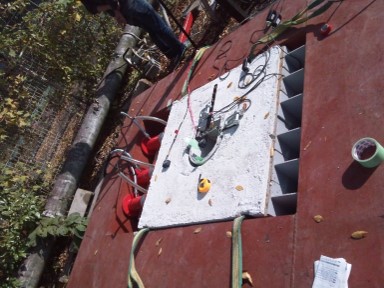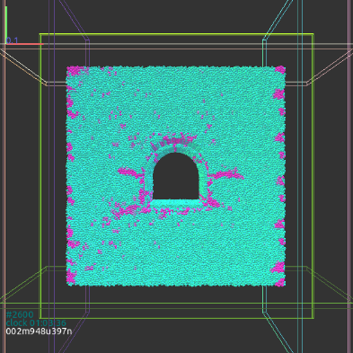Example
Earthquake-resistant measures for irrigation tunnels
[Overview and purposes]
It has been pointed out that irrigation tunnels can be damaged by large earthquakes, and in Japan, where the Nankai Trough Earthquake is predicted to occur with a high probability, making them earthquake-resistant is an urgent issue. Damage caused by large earthquakes occurs when shear waves are added to ordinary ground pressure, and it often occurs in geologically poor sections, including faults and fracture zones. Therefore, it is important to obtain accurate information on the ground in the geologically poor sections. The goal of this study is to conduct exploration using cosmic ray muons on the ground around an irrigation tunnel to obtain the density of the ground and the precise distribution of a geologically poor section, as well as to conduct numerical analysis and model testing in consideration of seismic retrofitting based on the obtained information to clarify the interaction between the ground and the tunnel lining, thereby evaluating countermeasures against large-scale earthquakes.
We conducted model testing and numerical analysis to clarify the interaction between the tunnel lining and the ground under shear force and the effect of the void. At that time, we confirmed the effect of earth pressure acting on the lining by changing the load acting on the ground. At the same time, we clarified the relationship between the density and the detected muons by conducting exploration using cosmic ray muons.


It has been pointed out that irrigation tunnels can be damaged by large earthquakes, and in Japan, where the Nankai Trough Earthquake is predicted to occur with a high probability, making them earthquake-resistant is an urgent issue. Damage caused by large earthquakes occurs when shear waves are added to ordinary ground pressure, and it often occurs in geologically poor sections, including faults and fracture zones. Therefore, it is important to obtain accurate information on the ground in the geologically poor sections. The goal of this study is to conduct exploration using cosmic ray muons on the ground around an irrigation tunnel to obtain the density of the ground and the precise distribution of a geologically poor section, as well as to conduct numerical analysis and model testing in consideration of seismic retrofitting based on the obtained information to clarify the interaction between the ground and the tunnel lining, thereby evaluating countermeasures against large-scale earthquakes.
We conducted model testing and numerical analysis to clarify the interaction between the tunnel lining and the ground under shear force and the effect of the void. At that time, we confirmed the effect of earth pressure acting on the lining by changing the load acting on the ground. At the same time, we clarified the relationship between the density and the detected muons by conducting exploration using cosmic ray muons.

Tunnel loading test

Numerical analysis results
